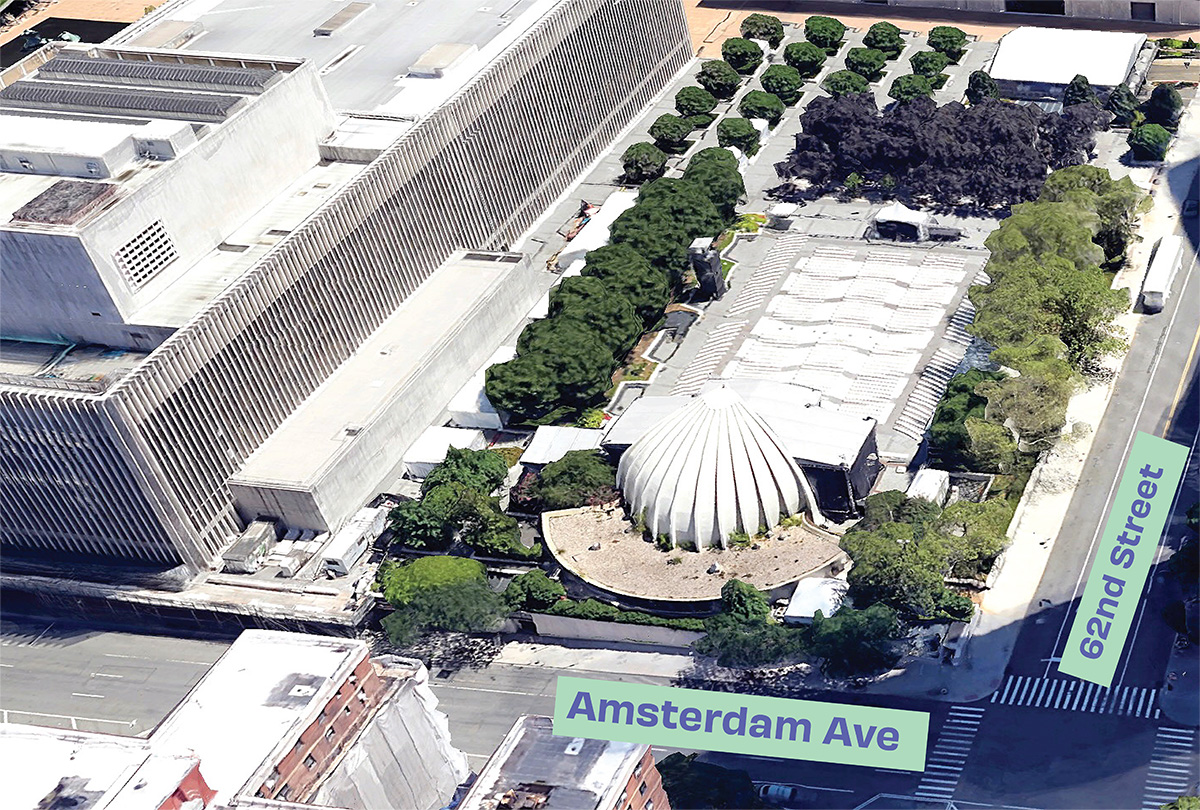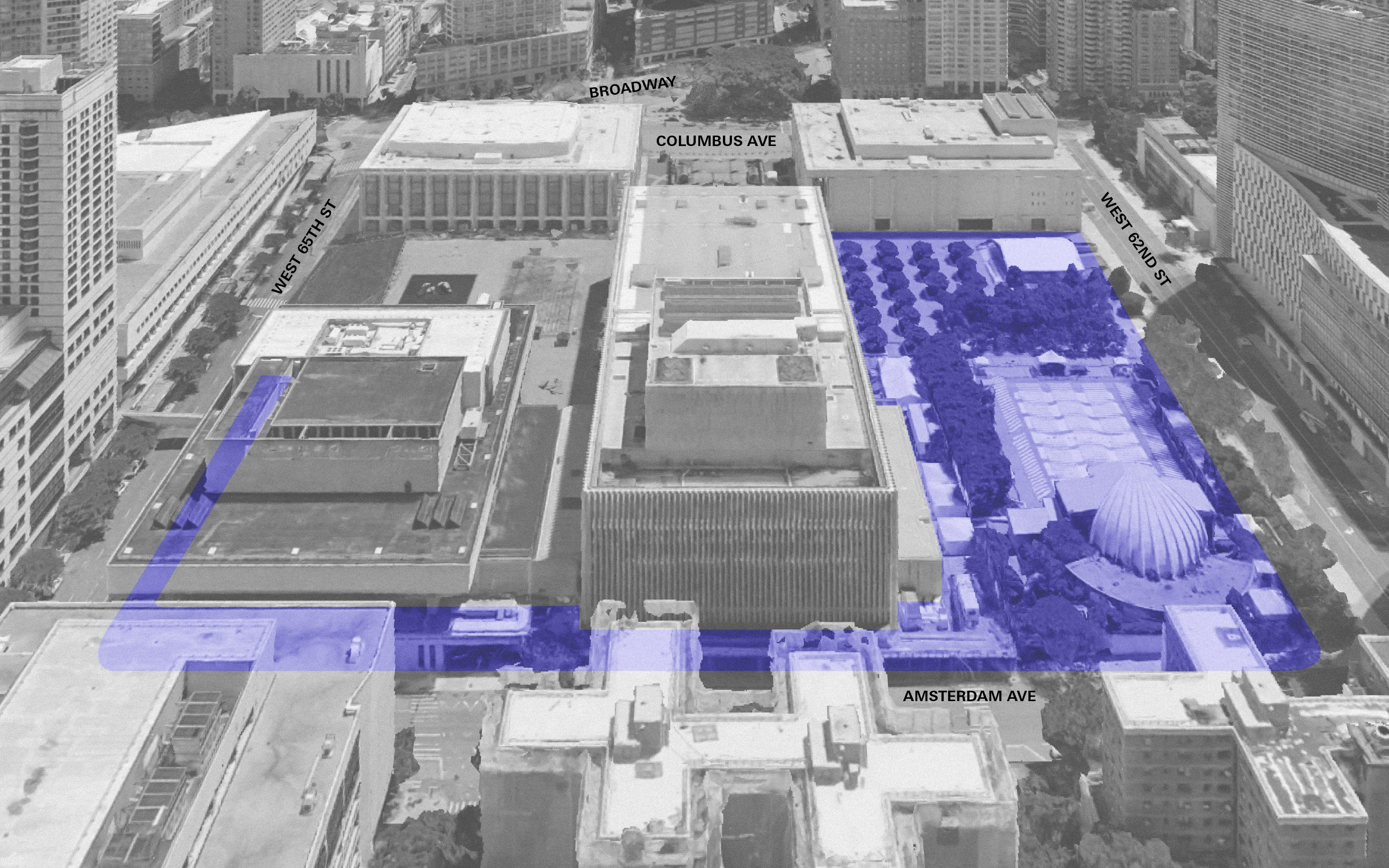
Architectural History
The design and construction of Lincoln Center played a pivotal role in the cultural, spatial, social and economic identity of New York City in the second half of the 20th century.
Modernist Architecture
Lincoln Center is architecturally significant as an example of Formalism and Brutalism movements in the United States. Modernist principles—such as strong geometric forms and the balance of void and massing/form in the interplay between landscape and architecture—are visible in the campus’s design.
Original Designers of Lincoln Center
Designed and constructed between 1955 and 1972, many iconic mid-century designers helped shape Lincoln Center including Philip Johnson, Wallace Harrison, Eero Saarinen, Gordon Bunshaft, and Landscape Architect Dan Kiley, among others. Lincoln Center’s clean lines and minimal ornamentation are evident across the campus buildings, public spaces, and landscapes.

These design choices are felt very differently today, especially along Amsterdam Avenue, where a wall acts as a barrier and sends a message of exclusion rather than connection, most directly to residents of New York City Housing Authority’s Amsterdam Houses.
History of Damrosch Park
Damrosch Park and the Guggenheim Bandshell were built by the New York City Parks Department with the architectural firm Eggers & Higgins as the architect of record and Darling & Webel as the landscape architects. Dan Kiley, advising Landscape Architect, provided input on the design of Damrosch Park, reflecting the overall vision of the North Plaza (now Hearst Plaza).
The Bandshell was conceived by Parks Commissioner Robert Moses as the outdoor stage. The design of the Bandshell evokes elements of Expressionism and Brutalism in its dramatic sculptural form and its extensive use of unadorned concrete. The design, while similar in color palette and building material to the rest of the Lincoln Center complex, represents a contrast to the buildings which are more rigid in their architectural expression.
Campus Renovations At-Large
In 2025, the campus welcomes visitors with an open embrace to the east due to a series of major campus redevelopments starting in the early 2000s, which have significantly improved Lincoln Center’s visual and physical connectivity to the surrounding streets on the north and east-facing frontages.
Visitors to the campus now enjoy expanded sidewalks, a pedestrian-centric Columbus Avenue entrance, and new hierarchies of public gathering spaces; these improvements also included necessary maintenance, universal accessibility, and infrastructure upgrades. But the renovation of public plazas stopped short of addressing critical infrastructure improvements in Damrosch Park and did not address the physical and emotional barriers along Amsterdam Avenue.
In 2016, a minor redesign and restoration of the bosque of trees in Damrosch Park was completed per a design by Mathews Nielsen Landscape Architects.

